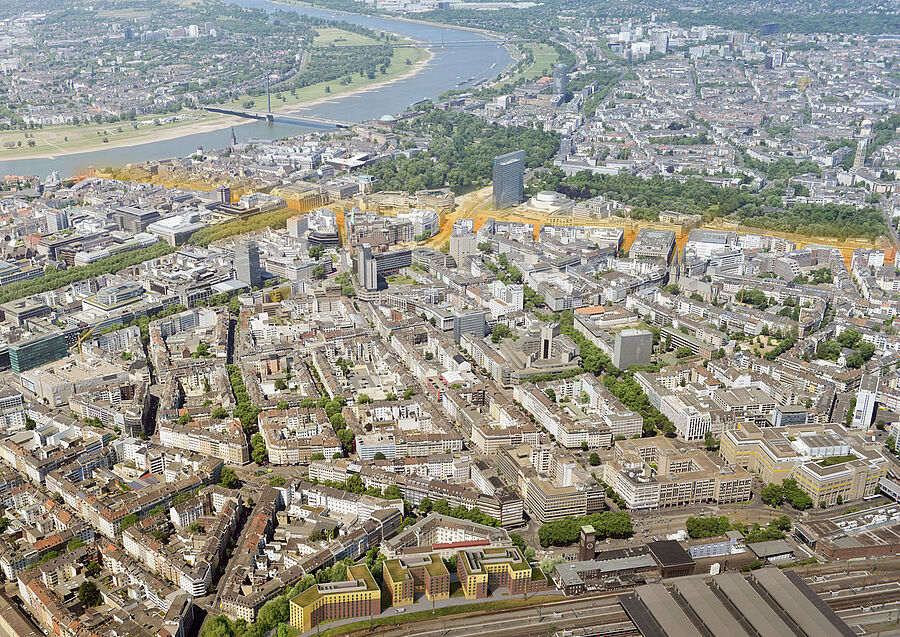08/27/2021
On the future of city centers
Progressive inner-city development.
Factors such as structural change in the retail sector, digitalization and the Covid pandemic have brought changes in city centers. These processes are taking place at a rapid pace. Consequently, how can we make city centers fit for the future?
Currently, in the discussion about the 'death of city centers', we start from the understanding that a functioning inner-city can only be a place with thriving retail. Consequently, we treat city centers as platforms of pure consumption and measure their success - or failure - by this single factor. Consumption should not be a dominant element, but an arrondite building block of a sustainable city. City centers are important places of social life. Therefore, a city center should not be considered complete only when retail functions: The public space and its quality must be in the foreground! This is the only way to create lively centers that allow a variety of uses.
The inner cities must once again become primarily places of encounter, exchange and deceleration. Therefore, we have to change our attitude towards the inner city! The actual major problems that have arisen over the years due to climate change, the need for a traffic turnaround, social grievances, etc. are becoming more and more visible in the inner cities - and are now being exacerbated by the Covid pandemic. Our current starting point must serve as a catalyst to bring about a paradigm shift. Because that's the only way city centers can transform from banal places for shopping to places for sustainable urban living and multifunctionality.
In our urban development study on the RheinBoulevard in Düsseldorf, commissioned by Forum Stadtmarketing e.V., we elaborated precise ideas on how Düsseldorf's inner city can be oriented for the future. The neighborhoods Schadowstraße, Königsallee and Altstadt can be more clearly experienced and strengthened through improved networking. Recreation and activity zones, more green in the urban space, new semi-public spaces, housing, complementary uses alongside retail, and hybrid, informal and flexible concepts are just some of the measures that can help promote and enable multifunctional mixes of uses. For a lively, sustainable and livable city!
